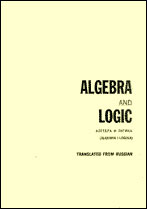|
This article is cited in 2 scientific papers (total in 2 papers)
A semigroup of theories and its lattice of idempotent elements
M. I. Bekenova, A. M. Nurakunovb
a Eurasian National University named after L.N. Gumilyov, Nur-Sultan
b Institute of Mathematics of the National Academy of Sciences of the Kyrgyz Republic
Abstract:
On the set of all first-order theories $T(\sigma)$ of similarity type $\sigma$, a binary operation $\{\cdot\}$ is defined by the rule $T\cdot S= {\rm Th}(\{A\times B\mid A\models T$ and $B\models S\})$ for any theories $T, S\in T(\sigma)$. The structure $\langle T(\sigma);\cdot\rangle$ forms a commutative semigroup, which is called a semigroup of theories.
We prove that a semigroup of theories is an ideal extension of a semigroup $S^*_T$ by a semigroup $S_T$. The set of all idempotent elements of a semigroup of theories forms a complete lattice with respect to the partial order $\leq$ defined as $T\leq S$ iff $T\cdot S=S$ for all $T, S\in T(\sigma)$. Also the set of all idempotent complete theories forms a complete lattice with respect to $\leq$, which is not necessarily a sublattice of the lattice of idempotent theories.
Keywords:
theory, complete theory, elementary equivalence, algebraic structure, direct product of structures, semigroup, lattice.
Received: 02.05.2020
Revised: 31.05.2021
Citation:
M. I. Bekenov, A. M. Nurakunov, “A semigroup of theories and its lattice of idempotent elements”, Algebra Logika, 60:1 (2021), 3–22; Algebra and Logic, 60:1 (2021), 1–14
Linking options:
https://www.mathnet.ru/eng/al2646 https://www.mathnet.ru/eng/al/v60/i1/p3
|


| Statistics & downloads: |
| Abstract page: | 322 | | Full-text PDF : | 86 | | References: | 46 | | First page: | 11 |
|





 Contact us:
Contact us: Terms of Use
Terms of Use
 Registration to the website
Registration to the website Logotypes
Logotypes







 Citation in format
Citation in format 
